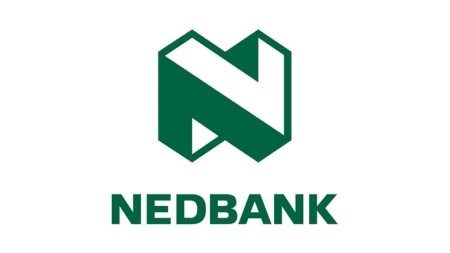*Jacques du Toit, Senior Property Economist of the Absa Group, looks at
historical trends in new and existing housing in South Africa*
Various indicators with regard to new and existing housing such as building
statistics, building costs, size trends and price developments, point to a
strongly performing residential market in recent years. However, it is evident
from these indicators that the market for both new and existing housing has
cooled off in recent times.
Building statistics for new housing
The building statistics for new residential buildings regularly published by
Statistics South Africa are a source of information with regard to the trends in
the demand for and supply of new housing in the country (see table).
Building statistics for affordable residential property at the lower end of the
market (houses of less than 80m²) have shown a very erratic trend over the past
number of years that does not correlate well with broad macroeconomic trends.
This may be the result of various factors influencing the delivery and financing
of housing in this segment of the market. These factors include expensive
development land and the high cost of and delays in rezoning land for
high-density, middle-class residential developments. These have contributed to a
sharp increase in holding costs. The effect has been to put profit margins of
contractors and developers under pressure in this segment of the market.
The number of new houses larger than 80m² and new flats and townhouses completed
increased significantly between 2002 and 2005. However, in the first half of
2006, the growth in the number of these residential buildings completed was
relatively low compared with the same period last year. From 2002 up to
mid-2006, a total number of 151 674 new houses larger than 80m² and new flats
and townhouses were completed.
With regard to the number of building plans approved by local governments for
these residential buildings, growth peaked in 2004, which is also in line with
trends in overall house price growth.
The abovementioned developments resulted from a strongly growing housing market
in the past few years. Recent building statistics and price growth data confirm
a slowdown in the market.
Building costs for new housing
The growth in the cost of building a new house was on a gradual upward trend
from 6% on average in 1995 to 17,8% in 2003.
Since 1997, the rise in building costs has been above the headline inflation
rate, which can be regarded as a reflection of an active building and
construction sector over the past number of years. Factors such as a strong
demand for building materials and skilled labour in view of the demand for new
housing have also contributed to this development.
However, the year-on-year growth in building costs peaked in 2003 and has since
been on a declining trend. This can be ascribed to the large number of
developers and building contractors active in the housing market over this
period, leading to greater competition.
With the residential market in the process of slowing down, and prospects of
this trend continuing into 2007, some developers and contractors may leave the
sector as a result of tight market conditions, lower levels of activity, tough
competition and squeezed margins. This may moderate building cost increases over
the next 12 to 18 months.
Size trends in new housing
According to Absa's calculations, the average building area of newly-built
residential properties was on a gradual upward trend between 1993 and 2003. In
1996, after interest rates had been increasing since late 1994, and in 2000,
after the high interest rates of 1998/99, the average building area declined
only marginally.
Despite the surge in house prices since 2000, which negatively influenced the
affordability of housing over this period, the average size of new housing kept
increasing until 2003 (see graph on building area). Stand size was probably
compromised in an attempt to still afford a decent-sized house However, the average size of new housing peaked at 174m² in 2003, declining to
169m² in 2004, 159m² in 2005 and 156m² in the first three quarters of 2006. This
is probably because the affordability of housing eventually started to have an
impact on the average size of newly-built housing.
The average size of stands on which new housing was built has been on a
declining trend since the early 1990s. The average land area has dropped from
932m² in 1991 to an all-time low of 520m² in the first three quarters of 2006
(see graph). This can be ascribed to suitable vacant land for residential
development becoming increasingly scarce, especially in the rapidly growing
urban areas of the country.
In the first three quarters of this year, the average land area for new housing
was 55,8% of what it was back in 1991 and only 40,8% of the average in 1980 when
it was 1 275m². This is an indication of an increase in higher-density
residential developments over the years. This trend is expected to continue in
future.
Price trends in new and existing housing
One of the indications of the state of the housing market is the comparison of
the average price of new and existing houses, used to determine whether existing
houses are overvalued in relation to new houses. The rationale of this analysis
is that, once a new house can be built for less than the cost of buying an
existing house, the market is set for a downward correction.
In this analysis, the price of a new house includes the construction cost of the
buildings, the market value of the stand, as well as VAT and transfer duty.
However, in most instances, the price of a new house excludes the cost of
landscaping and other improvements such as a pool, paving, lapa, perimeter
walls, security systems and carports. The price of an existing house includes
that of the buildings, the stand and all improvements to the stand, but excludes
transfer duty payable.
There is, however, a belief that comparing the prices of new and existing houses
is a meaningless exercise, as the average house in South Africa is a few decades
old, and has depreciated over the years through aging.
In contradiction to this belief, many older properties have been renovated,
expanded and improved over the years, in many cases more than once. Therefore
these properties have over time often appreciated in real value.
Moreover, during a boom phase in the residential market, as was experienced over
the past few years, the increased construction of new housing is expected to
lower the average age of the housing stock.
At the peak of the property market boom in the first half of the 1980s, the
price difference between new and existing houses had declined to almost zero
before the crash of the mid-1980s. Currently the price difference is also very
small, after reaching a level of R167 700 or 28,8% in 2003, before tapering off
to only about R12 300 or 1,5%, on average in the first three quarters of 2006
(see graph). This is the result of the nominal price growth of new houses
increasing at a faster pace than that of existing houses during 2002 and 2003.
However, the nominal price growth of new houses was much lower than that of
existing houses from 2004 up to 2006 (see graph). This caused the price
difference between new and existing houses to narrow significantly during this
period.



